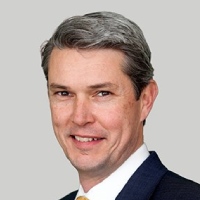After the strong recovery that followed the market turmoil last March, investors have seen a marked shift since the beginning of 2021: with the exception of high yield, markets have contracted. This shift reflects investors’ reflation fears, which have gathered pace as belief grows in the global recovery story during the second half of the year.
Current estimates suggest: a significant shortening in the period until the US Federal Reserve’s first rate hike; a doubling in the pace once hikes start; and a sharp increase in the terminal rate.
Yet the repricing of inflation as a result of the economic pick-up is very much weighted towards the short end of the curve, at the two-year and five-year bonds. Further out, expectations of inflation haven’t moved as much. This makes sense when the reinflationary activity over the past few months is set against the much longer disinflationary trend of the last 25 years.
By focusing on the current temporary effects of higher inflation, investors are missing out on the broader cyclical picture, which is favourable for EM. There will be supply bottlenecks as demand outpaces supply as economies recover, with an accompanying surge in inflation, but these should be transitory – this is not a death knell for the era of modest inflation.
What’s the outlook for EMD allocations?
Over coming months, various potential scenarios could play out and each will have different implications for EMD investors, we summarise these in the diagram below.
Our base case expectation is shown in the middle of the chart; we believe there will be a cyclical recovery and this is currently priced into markets. We also think rising inflation will be transitory in nature, rather than structural.
Other potential scenarios are:
- Reflation (top right): EMFX does well in a cyclical environment but interest-sensitive assets such as bonds could struggle.
- Super easy Fed (bottom right): Everything EM does well in a weak environment for the US dollar as the cyclical outlook deteriorates slightly. This is not an unrealistic scenario.
- Recessionary conditions brought on by China overtightening or a deteriorating COVID backdrop (bottom left) would see the US dollar benefit from a flight to quality and EM bonds do better.
- Fed overtightening (top left): While potentially the most damaging scenario for EM assets, we see this as the least likely scenario due to the Fed’s average inflation targeting framework.
A new era for US foreign policy?
As expected, President Joe Biden has provided a more orthodox approach to foreign policy, which has been widely welcomed – not just across EM – and will be positive for global growth prospects. Rather than a shift towards a completely new modus operandi, we see this as the US administration is keen to move away from an anomaly of a confrontational style under president Donald Trump. Biden’s administration is showing a willingness to sign up to a rules-based approach, signalled by its rejoining of the World Trade Organization and the Paris Agreement on climate change. It has simultaneously shown that it will re-engage on human rights.
Yet this greater predictability does not mean Mr Biden will prove a light touch. We still see signs of an “America first” approach as nations look to recover from the pandemic, and compared with the stances taken by former presidents Bill Clinton and Barack Obama, Mr Biden’s approach may appear more hard line. Certainly, we do not expect any reset in relations with China or Russia.
Perhaps the best that can be said about the likely development of Sino-US relations is we see little likelihood of an intensification of the current trade war, although the US has already said that it is not ready to lift tariffs on Chinese imports.
The new US administration is also expected to be more hawkish towards Russia. The list of disputes is long, including SolarWinds and Nord Stream 2, but we think any additional sanctions will be targeted.
Elsewhere we think the chances of a reboot in relations with Iran look unlikely ahead of that country’s election in June, while the US is also signalling that relations with Turkey are not top of its agenda. In both these countries we expect relations will just muddle through.
Why is climate risk moving to the fore?
On climate change, Mr Biden’s decision to rejoin the Paris Agreement just hours after his inauguration signalled an intent to insert climate change into the architecture of global diplomacy and this is expected to have positive secondary effects throughout EMs.
The EM investment universe contains many countries at risk from the climate crisis such as droughts and floods, much more so than DMs. Yet it also offers expertise in a number of greener investments (batteries, solar technology), likely to benefit as the US invests in greener infrastructure investments. Either way, it is clear that EM governments will need to play a key role in the planet’s transition towards a sustainable future.
Peter Eerdmans is portfolio manager at Ninety One (formerly Investec Asset Management). Peter Kent is co-head of SA & Africa Fixed Income at Ninety One (formerly Investec Asset Management).


